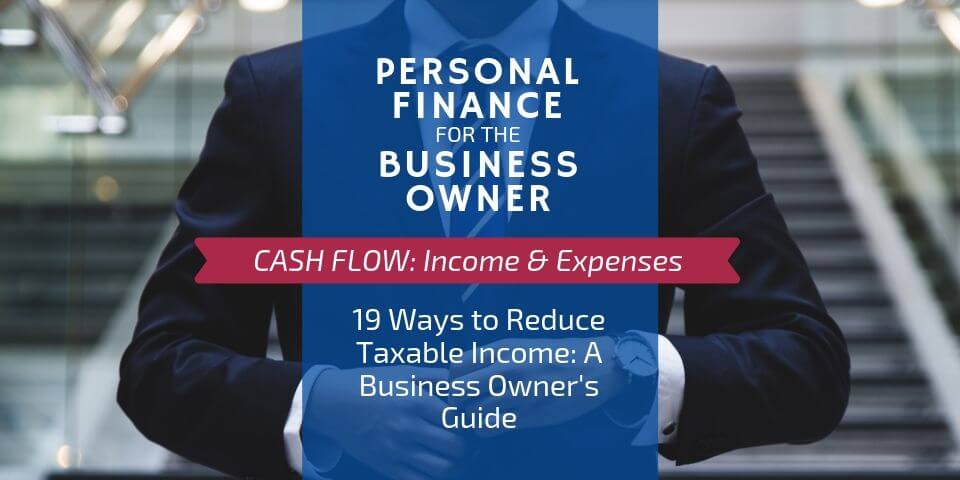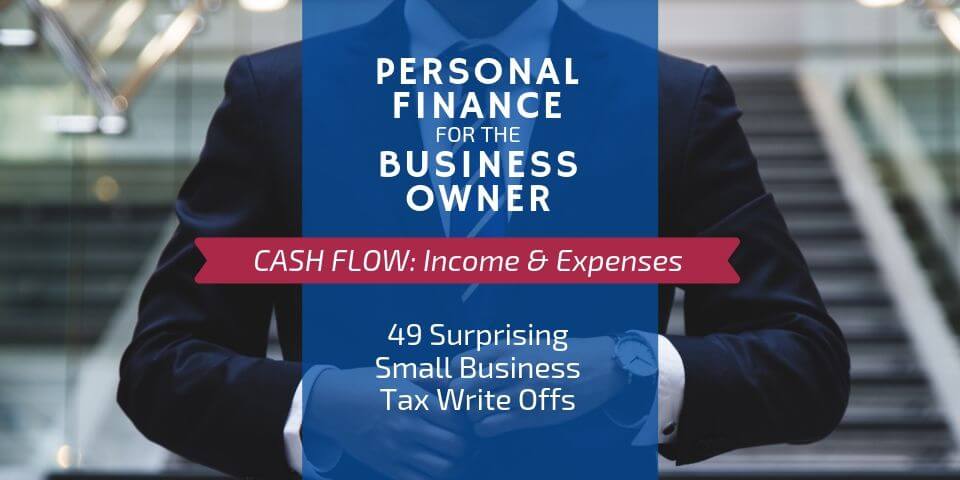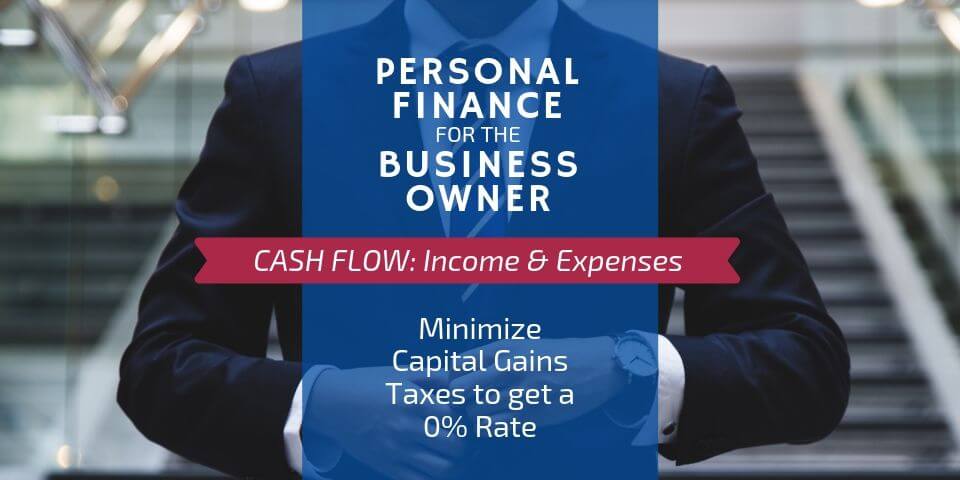
20 Ways to Reduce Taxable Income: A Business Owner’s Guide
June 13, 2019
49 Surprising Small Business Tax Write Offs You Might Be Able to Take
June 21, 2019Minimize Capital Gains Taxes to Get a 0% Tax Rate

Business owners pay their fair share of taxes. Among all the hundreds of taxes they pay, today we’re going to focus on capital gains tax. This tax is levied on the net gains you make when you sell capital assets like stocks, businesses, land, works of art, etc. However, there are ways to minimize capital gains taxes allowing you to work toward that elusive 0% tax rate.
Follow along with the Financially Simple podcast:
Podcast Time Index for “How to (try to) Pay ZERO Taxes on Captial Gains”
- 01:06 – How to Pay No Taxes on Capital Gains
- 01:21 – What is a Capital Gain?
- 01:44 – Short-Term Gains & Long-Term Gain
- 03:05 – The Magic Number
- 04:50 – Hold On
- 06:13 – Exclude Home Sales
- 07:45 – Rebalance With Dividends
- 09:19 – Use Tax-Advantaged Accounts
- 10:04 – Tax Loss Harvesting
- 11:59 – Carry Losses Over
- 14:30 – Wrap Up
Capital Gains
In 2019, if you are a married couple filing taxes jointly and you make less than $78,750 in income (including your capital gains earnings), then you pay ZERO dollars in capital gains taxes. Zero. Obviously, then, your goal becomes “Can I reduce my family’s taxable income to $78,750 or less in the years we earn capital gains?” You may think that’s impossible, but it’s not.
A client of mine owned a small business and made $63,000 in profits after all the basic expenses. That same year, he flipped a rental house generating him $30,000 in long-term capital gains. Obviously, that placed him over the $78,750 income threshold. Therefore, his tax advisor and I had to come up with ways to reduce his taxable income. We used retirement accounts and HSAs. We did everything we talked about in my most recent article, and ultimately, we got his income below $78,750. Because of that, he paid zero taxes on the $30,000 earnings he made on the rental house he sold.
You might be able to do the same thing.
6 Ways to Minimize Capital Gains Taxes to Try for A 0% Tax Rate
#1 – Wait to Sell
The first thing I’m going to tell you to do is to hold on. If at all possible, don’t sell a capital asset in the first 12 months.
The Internal Revenue Service separates capital gains into two different classifications: short-term gains and long-term gains. If you sell a capital asset within the first 12 months of having it, then you’ll have to pay ordinary income tax rates up to 37% on that gain. However, if you wait 12 months before selling the capital asset, you would owe long-term capital gains tax rates up to 20% on your profits. That’s a significant difference!
Let’s say that you purchased a stock for $100,000 nine months ago. It’s currently worth $300,000. Thus, you have $200,000 of earnings. If you sell that stock now (within a year of purchasing it), the $200,000 of earnings will be added to your family’s taxable income for the year. If your family makes $200,000 from your business and from your spouse’s job, then all of a sudden, you’re now making $400,000 in income for the year according to the IRS. That puts you in one of the highest tax brackets there is. However, if you wait a full year before you sell that same stock, you can drop your income tax from short-term ordinary income down to long-term capital gains tax at a much lower tax rate.
#2 – Exclude Home Sales
The second thing I’m going to tell you is that you can sell your primary residence and not pay taxes on up to $500,000 of your profits – your capital gains – if you are married and filing a joint tax return. However, this comes with a qualifier; you have to have lived in the home for two of the past five years.
A client of mine bought a house in California for $500,000 several years ago. Now, his primary residence is valued at $1.5 million. If my client sells the house at its current value, he will make $1 million in profit. Yet, upon the sale, my client will not pay taxes on the first $500,000 of his capital gains. He’ll only pay taxes on the second $500,000 he made. And since that $500,000 counts as long-term capital gains instead of short-term ordinary income, he’ll pay somewhere around 20% on the $500,000. Thus, he’ll pay about $100,000 on $1 million of gains. That’s a 10% tax bracket! Not too shabby, right?
#3 – Re-balance with Dividends
Another thing you can do to lower your capital gains tax is you can re-balance your non-qualified investment accounts. Let’s say you’ve invested $100,000 in stocks and bonds. You put $50,000 into stocks and $50,000 into bonds. Over time, one position in the portfolio could become greater than the other due to increases or decreases in the market. However, your risk tolerance remains the same, so you want to return the portfolio to its original 50/50 allocation.
To return the portfolio to its original allocation percentage, you either have to sell positions that are performing well or buy positions that are underperforming. Yet, if you sell positions that have increased in value, you will owe capital gains taxes on the money you’ve earned. One method to avoid paying capital gains taxes is to divert your dividends. Instead of taking your dividends out as income to yourself, direct the dividends to pay into the money market portion of your investment account. Then, use the cash in your money market account to purchase under-performing positions. This method allows you to re-balance without having to sell an appreciated position and generate a cap gain.
RELATED READING: Should You Rebalance Your Portfolio?
#4 – Use Tax-Advantaged Accounts
You can also reduce your capital gains tax by investing in your retirement accounts and other tax-advantaged accounts. Contribute to ROTH IRAs, ROTH 401(k)s, HSAs, and 529 plans if they’re eligible. Essentially, you want to place money into accounts where the interest you earn never hits your tax returns. That way, you don’t have to pay capital gains on the money you earn.
Additionally, you can place money into qualified retirement accounts that give you present-day tax advantages like traditional IRAs and 401(k)s. Although you may pay capital gains taxes on dividends earned when you withdraw the money years down the road, any contributions you make to these accounts each year reduce your taxable income. Remember, if your income is less than $78,750 as a married couple filing jointly, you won’t owe capital gains taxes. Your contributions to your IRA and your 401(k) could bring your taxable income below that threshold. Essentially, then, contributing to those accounts can help you reduce or eliminate your current capital gains taxes.
#5 – Use Tax Loss Harvesting
One of my favorite ways to avoid paying capital gains taxes is a strategy I introduced in my last article – tax-loss harvesting. This is where you sell investments at a loss to offset, or wash, out gains from other investments you sold. Let’s say that you just sold some stock and had $10,000 in gains. In that same portfolio, there’s a stock that has lost $10,000. If you sell that losing stock, you offset the gain on which you would have paid taxes.
Yet, for tax-loss harvesting to work for you, you and your tax professionals have to monitor your tax liabilities throughout the year. Some years, you may not need to sell losing stocks. Your taxable income may be below the $78,750 threshold even if you make capital gains on non-qualified investments. However, if you and your tax advisor see that your taxable income might exceed that threshold and you’re earning capital gains by selling investments, you might be able to use tax-loss harvesting to offset your gains and to qualify for that 0% capital gains tax.
#6 – Carryover Losses
Technically, if your capital losses exceed your capital gains, then you can deduct the difference as a loss on your tax return. However, the IRS places a limit on the amount of losses you can deduct each year. As of 2019, a married couple filing taxes jointly can deduct up to $3,000 of capital gains losses. However, you may have more than $3,000 in capital gains losses in a year. If you do, the IRS allows you to carry over the excess loss to later years.
There are some times, especially when I work with business owners, that I help clients create significant losses for whatever reason. However, my clients can’t write them all off in one year. Thus, we’ll use the carryover rule to claim losses for several years in a row. Yet, not all losses qualify for multi-year carryover deductions.
Next Steps…
Friends, all of these financial strategies to minimize your taxes get complicated. If you’re truly trying to maximize your net worth, it’s not as easy as getting a booklet that tells you what to do and then filling out the booklet. Some financial planners want you to believe that. They want to sell you something to reach a quota, but they don’t want to work with you year-in and year-out to make sure you reach your financial goals. There’s a difference between working with your Wall Street broker who just wants to sell you an asset to gain a commission and working with a registered investment advisor who has a fiduciary responsibility to act in your best interest.
True financial planners, or wealth management advisors, realize that things like carryover losses, tax-loss harvesting, contributions to retirement accounts, selling your house, and timing your asset sales make a difference in the amount of capital gains taxes you will pay and the amount of taxable income you have to claim. They will work with you to drop your taxable income below the threshold so that you can pay a 0% rate on capital gains.
For more ideas on how to keep your hard-earned money in your pocket, go to the Income and Expenses category of this educational series – Personal Finance for Small Business owners. And of course, reach out if you have questions about growing, rather than “giving away” your wealth.



